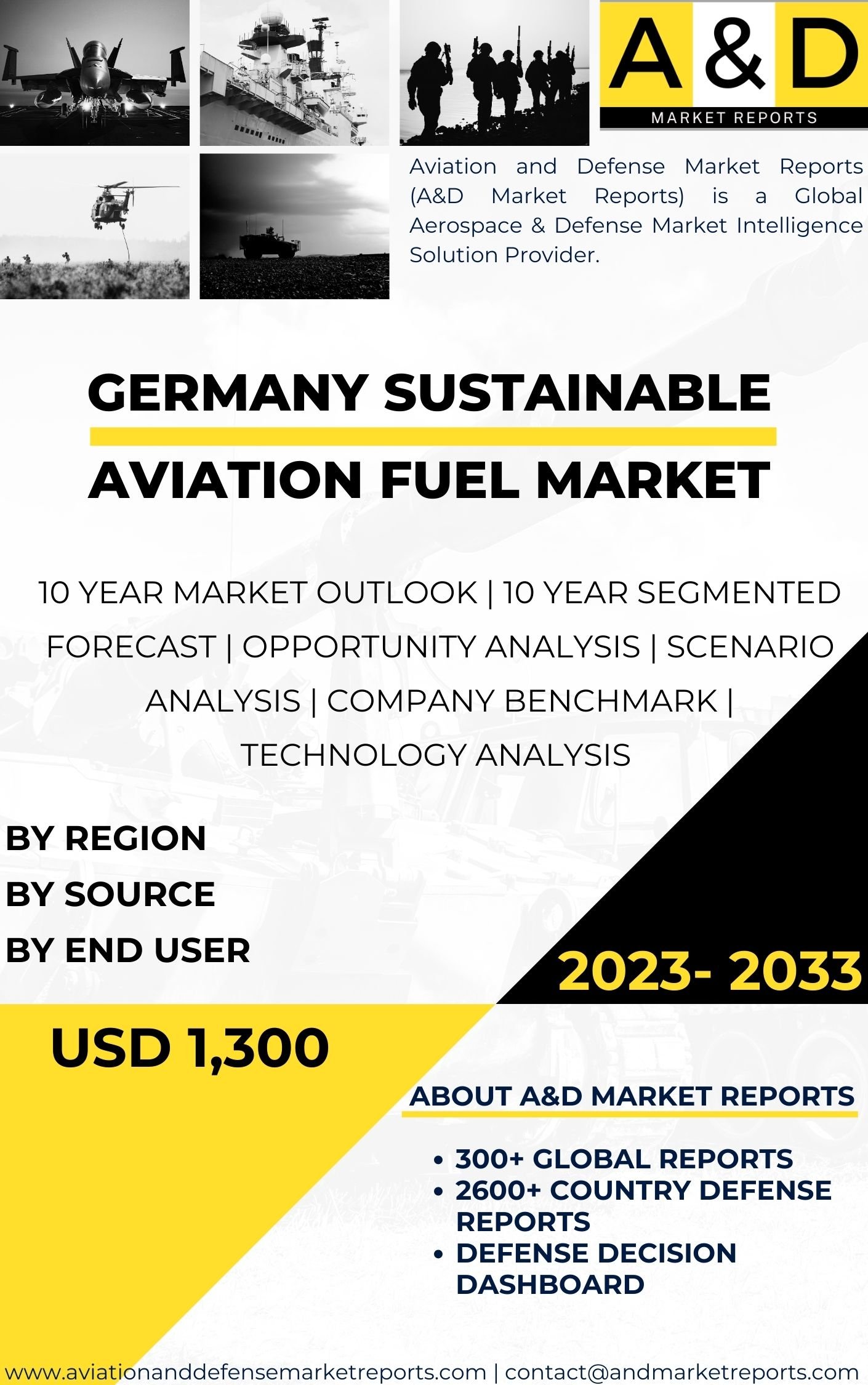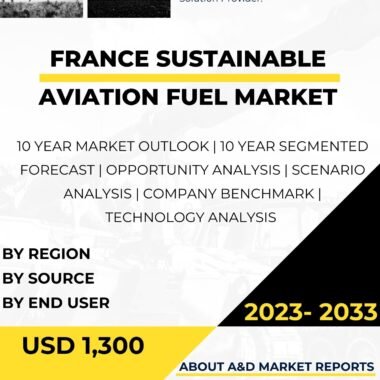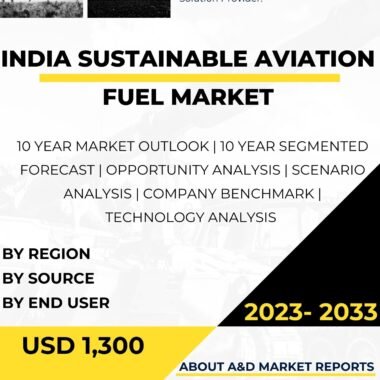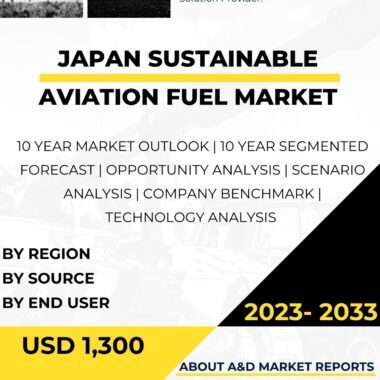Description
Germany sustainable aviation fuel (SAF) market has been an emerging and critical segment within the country’s aviation and energy sectors. Sustainable aviation fuel, also known as biojet fuel or renewable jet fuel, is a low-carbon alternative to conventional fossil-based jet fuel. It is produced from sustainable feedstocks such as agricultural waste, forestry residues, non-edible oils, and other renewable sources. The adoption of SAF is seen as a vital step in reducing the aviation industry’s carbon footprint and contributing to Germany’s efforts to address climate change and meet its environmental commitments.
The Germany sustainable aviation fuel market is influenced by several factors, including the country’s commitment to combat climate change, its role as a leading global aviation hub, and its recognition of the need to decarbonize the aviation sector. As one of the largest aviation markets in Europe, Germany understands the importance of investing in sustainable aviation solutions to align with international climate agreements, reduce greenhouse gas emissions, and support a more sustainable aviation industry.
The market encompasses both domestic production and imports of sustainable aviation fuel and related technologies. Germany has seen the establishment of several biofuel production facilities and partnerships between airlines, fuel suppliers, and renewable energy companies to develop and supply SAF. Additionally, Germany may also import SAF from other countries to supplement domestic production and meet the growing demand for sustainable aviation solutions.
The Germany sustainable aviation fuel market is characterized by a focus on innovation and technological advancements. Companies in Germany continuously strive to develop state-of-the-art processes and technologies for producing SAF from various renewable feedstocks. The integration of advanced refining techniques, catalysis, and sustainable feedstock sourcing has been a key area of research and development to enhance the performance and sustainability of SAF.
One of the challenges faced by the Germany sustainable aviation fuel market is the current limited production capacity and higher production costs compared to conventional jet fuel. The higher cost of production is primarily due to the scale of production, technological maturity, and economies of scale. However, with increasing demand and government support, there is potential for the costs to decrease over time, making SAF more economically viable and competitive in the aviation market.
The German government and aviation industry stakeholders have taken significant steps to support the development and adoption of sustainable aviation fuel. Various policy initiatives, financial incentives, and regulatory frameworks have been introduced to encourage the use of SAF. These measures include tax incentives, grants, and sustainability certification schemes to promote the production, distribution, and use of SAF in commercial aviation.
The Germany sustainable aviation fuel market also addresses challenges related to feedstock availability and sustainability. Ensuring a diverse and sustainable supply of feedstocks is crucial to prevent competition with food crops, deforestation, and other negative environmental impacts. Germany is investing in research and development to explore innovative and sustainable feedstock sources to produce SAF without compromising food security and biodiversity.
Another area of focus in the market is the development of advanced aviation technologies and aircraft that are compatible with sustainable aviation fuel. Aircraft manufacturers and airlines are exploring ways to optimize aircraft performance and emissions reductions when using SAF. This includes modifying aircraft engines and refining fuel delivery systems to ensure compatibility and maximize the environmental benefits of SAF.
In recent years, the demand for SAF has been increasing, driven by international climate commitments, corporate sustainability goals, and growing awareness of the aviation industry’s carbon footprint. Airlines operating in Germany have started to blend SAF with conventional jet fuel, reducing their carbon emissions and demonstrating their commitment to sustainability.
To accelerate the adoption of SAF, collaboration between governments, the private sector, and research institutions is crucial. Germany has been actively participating in international initiatives and partnerships to promote the development and use of sustainable aviation fuel. This includes engagement with organizations such as the International Civil Aviation Organization (ICAO) and the European Union Aviation Safety Agency (EASA) to establish global standards and regulations for SAF.
In conclusion, the Germany sustainable aviation fuel market is an emerging and critical segment within the country’s aviation and energy sectors. Sustainable aviation fuel plays a crucial role in reducing the aviation industry’s carbon footprint, contributing to Germany’s efforts to combat climate change, and supporting a more sustainable aviation sector. The market is driven by Germany’s commitment to environmental sustainability, advancements in SAF production technologies, and the need to align with international climate agreements. As Germany continues to invest in research, development, and policy initiatives, the sustainable aviation fuel market is expected to play an increasingly pivotal role in shaping the country’s aviation industry and promoting a greener, more sustainable future for air travel.




